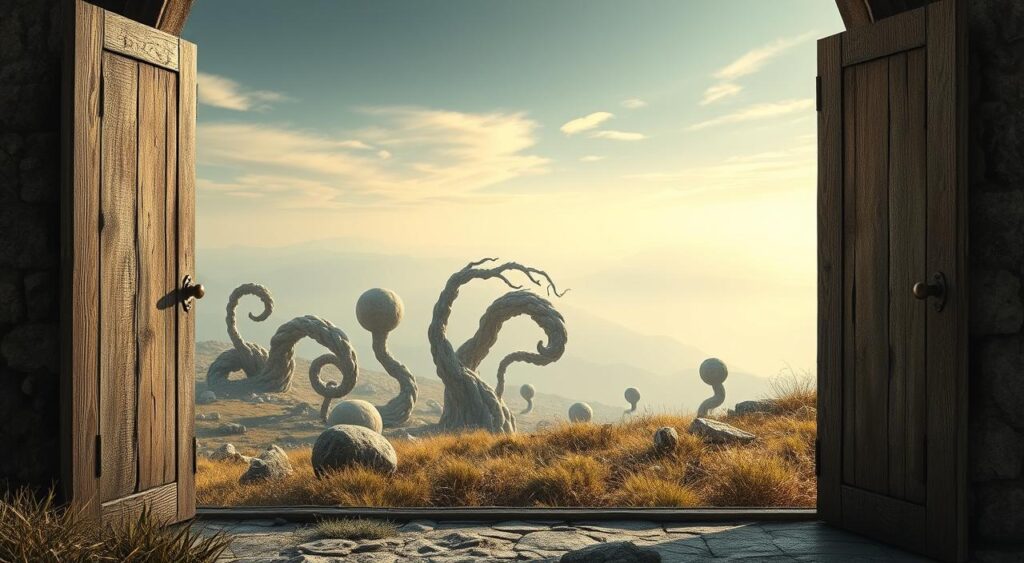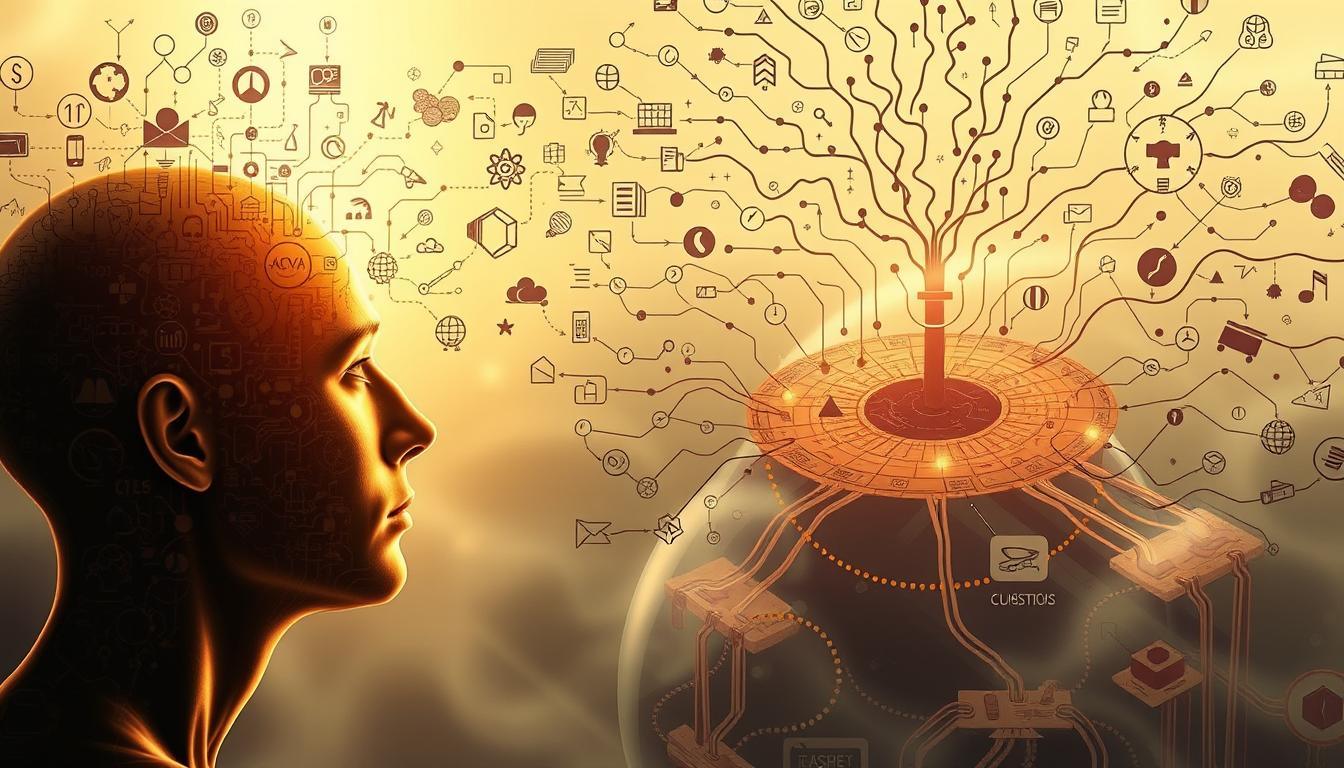Ever seen a face in a cloud or thought a lucky ritual worked? You’ve just seen the apophenia mental model at work. This is when our brains connect unrelated things. Psychiatrist Klaus Conrad named it in 19581.
Apophenia makes us see patterns in random data. For example, thinking a coin toss’s outcome is influenced by past ones (the gambler’s fallacy)1. It’s a leftover from when spotting predators was key. Now, it can lead to seeing conspiracies or believing in superstitions1.
Knowing about apophenia is important. It affects our choices. While it’s usually harmless, severe cases might need therapy1. Want to learn how it shapes your decisions?
Key Takeaways
- The Apophenia mental model is spotting links where none exist—a skill once vital for survival1.
- It’s behind phenomena like pareidolia (faces in clouds shapes) and conspiracy theories1.
- Klaus Conrad first linked it to schizophrenia stages in 19581.
- Mild cases are common, but extreme versions may need treatment1.
- It’s rooted in how your brain evolved to seek patterns, even false ones1.
Understanding Apophenia: The Basics
Learning about apophenia meaning begins with its apophenia definition. It’s when our brains find connections where none are. This can make us see faces in clouds or hear voices in random sounds.
Definition of Apophenia
Apophenia definition is about seeing patterns in chaos. It’s like linking unrelated events to hidden plans. While it’s okay in small amounts, it can lead to delusions in some cases, like in schizophrenia.
In these cases, people believe in conspiracies that don’t exist2. This urge to make sense of noise shapes how we see the world.
Key Characteristics of Apophenia
- Pattern hunting: Your brain connects dots to predict outcomes
- Emotional weight: Feelings like hope or fear amplify perceived links
- Context blindness: Ignores missing data to fit stories together
Apophenia vs. Pareidolia vs. Confirmation Bias
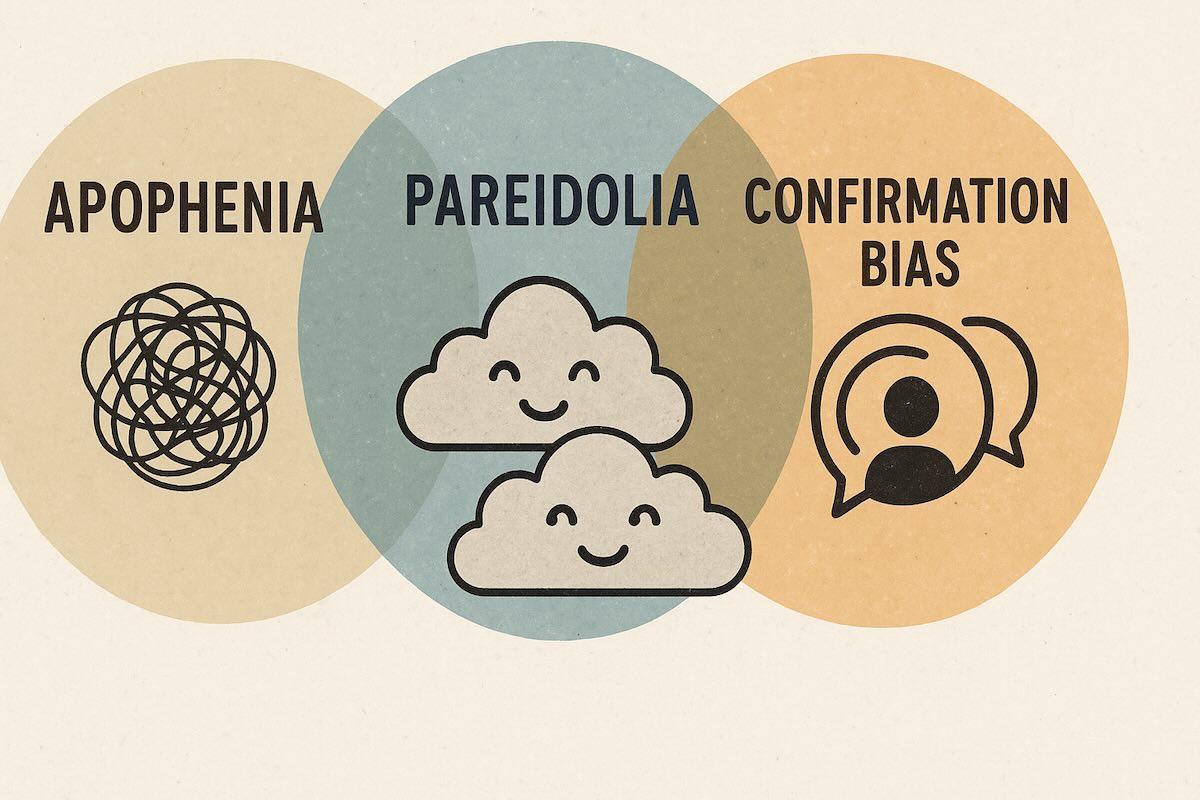
Apophenia is about seeing patterns where none exist. Pareidolia is a part of this, like seeing faces in clouds. It’s when we see shapes that aren’t really there.
Confirmation bias makes this worse. It’s when we ignore evidence that goes against what we believe. This can shape how we see the world and make decisions, often without us knowing it.
Common Examples of Apophenia
Pareidolia, like seeing a face on the moon, is a classic apophenia examples2. Traders might risk losses by chasing “patterns” in stock charts that don’t exist technical analysis traps2. Spotting “luck” in lottery numbers or hearing songs in random noises are everyday examples.
The Psychology Behind Apophenia
Your brain is always looking for meaning, even when there isn’t any. This drive is at the core of apophenia psychology. By understanding how your mind works, you can tell when looking for patterns becomes harmful.
Recent studies reveal this process aids survival but can also warp reality3.
How Your Brain Seeks Patterns
- Template matching: Your brain compares new things to what it already knows.
- Prototype matching: It looks for general patterns in categories.
- Feature analysis: It breaks things down to find similarities.
“Evolutionary survival favored overreacting to threats over ignoring real danger,” say researchers3.
This means your brain sometimes sees patterns to stay safe, even if they’re not real3.
The Role of Confirmation Bias
Confirmation bias acts like a filter, making you believe what you already think. This apophenia cognitive bias makes false patterns stronger by ignoring opposing evidence4.
For instance, seeing a “lucky number” after winning but ignoring losses shows this bias4.
Real-World Applications of Apophenia
Many people believe in “hot streaks” when playing slot machines. They think certain times are luckier than others. This is a form of apophenia, where we see patterns where none exist.
Investors often spot patterns in stock prices that aren’t really there. A 2021 study in behavioral economics showed this is a common mistake. It’s a way our brains try to make sense of random data.
A woman once sold a grilled cheese sandwich for $28,000. She thought it had an image of the Virgin Mary. This shows how our brains can turn random things into meaningful stories.
“Events that appear unusual may occur more frequently than perceived, shaping how we interpret patterns.”5
Making Sense of Random Events
Seeing a face in a cloud or feeling lucky on 11/11/11 is apophenia examples. A grilled cheese sandwich sold for $28,000 because of its “Virgin Mary” pattern. This shows how we give meaning to chance6.
Even animals, like pigeons in B.F. Skinner’s experiments, link random rewards to their actions5. This apophenia in research shows how bias affects our decisions. For example, gamblers’ fallacies cost billions each year7.
But, these tendencies can also lead to hypochondria or conspiracy theories if taken too far6.
How Apophenia Impacts Creativity and Innovation
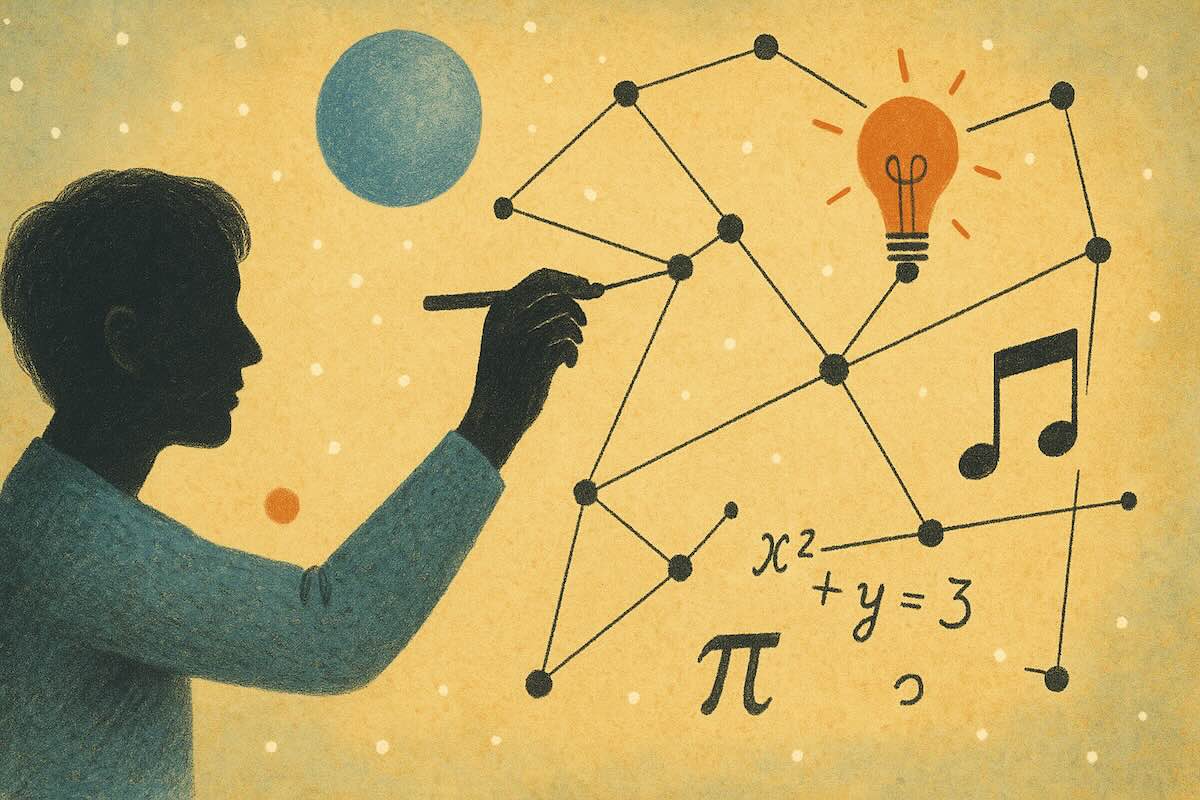
Apophenia can lead us astray, but it’s also tied to creativity. Research finds that those who spot patterns, real or not, excel in creative thinking. Salvador Dalí’s dreamy art and Steve Jobs’ “connect the dots” idea show this balance.
By accepting apophenia, we might spark new ideas. Yet, we must also guard against false beliefs. This balance is key to harnessing creativity without falling into irrational thinking.
A 2020 study found a link between apophenia and creativity, like fantasy-proneness5. But, it’s important to find a balance. John Nash’s schizophrenia showed extremes of pattern-seeking, but his math genius also relied on linking abstract ideas6.
By understanding these mechanisms, we can use our mind’s pattern-seeking to fuel new ideas. This way, we avoid traps like superstition.
Apophenia in Everyday Life
Understanding apophenia pattern recognition starts with how you see the world. Seeing faces in clouds or linking random events to hidden meanings shows your brain’s search for order.
This apophenia cognitive bias affects decisions, from work to health care, often without you realizing it.

Seeing patterns in data can be both good and bad. For instance, noticing trends in stock markets or medical studies might seem insightful. But apophenia bias can make you see connections that aren’t there.
A study found no real link between office environments and cancer risks, yet fear persisted due to perceived patterns7. This shows how patternicity influences beliefs7.
Big and small decisions are influenced by this bias. Ever felt like you’re “due for a win” after losing a game? That’s apophenia cognitive bias at work. Gamblers often bet more after winning, ignoring the randomness—a hard-easy effect twist8.
Even simple choices, like avoiding a flight after a crash, can come from misjudging risks.
- Spotting shapes in clouds? That’s apophenia pattern recognition at work9.
- Medical professionals might misdiagnose due to bias, affecting marginalized groups9.
- Therapists help patients balance pattern-seeking and reality checks to avoid delusions7.
Be aware of how your brain connects dots. Ask yourself: Is this a real pattern or just a apophenia bias trick? Questioning assumptions can turn this instinct into a useful tool, not a trap.
Apophenia in Popular Culture
Popular culture shows our brain’s need to find meaning in chaos. Films and memes are filled with apophenia examples. They reflect our search for significance. The term apophenia was first used by psychiatrist Klaus Conrad in the 1950s10.
Examples in Movies and Literature
Movies like A Beautiful Mind show how seeking patterns can lead to delusions. In The Number 23, Jim Carrey’s character becomes obsessed with a number. This mirrors real-life apophenia examples, like Elvis fans who thought “Elvis has left the building” was a secret message.
Books like Pi also explore this theme, showing how patterns can drive people.
Portrayal in Art and Media
Artists tap into this urge to find meaning. The “Face on Mars” photo sparked debates. In the 1960s, Beatles fans believed they found clues that “proved” Paul McCartney had died11.
Online, games like the Wikipedia race challenge players to find connections quickly11. Social media has fueled theories like Pizzagate, where people analyzed leaked emails for “proof” of conspiracies11.
These examples show how apophenia meaning shapes our shared beliefs, turning random information into compelling stories.
How to Embrace Apophenia Positively
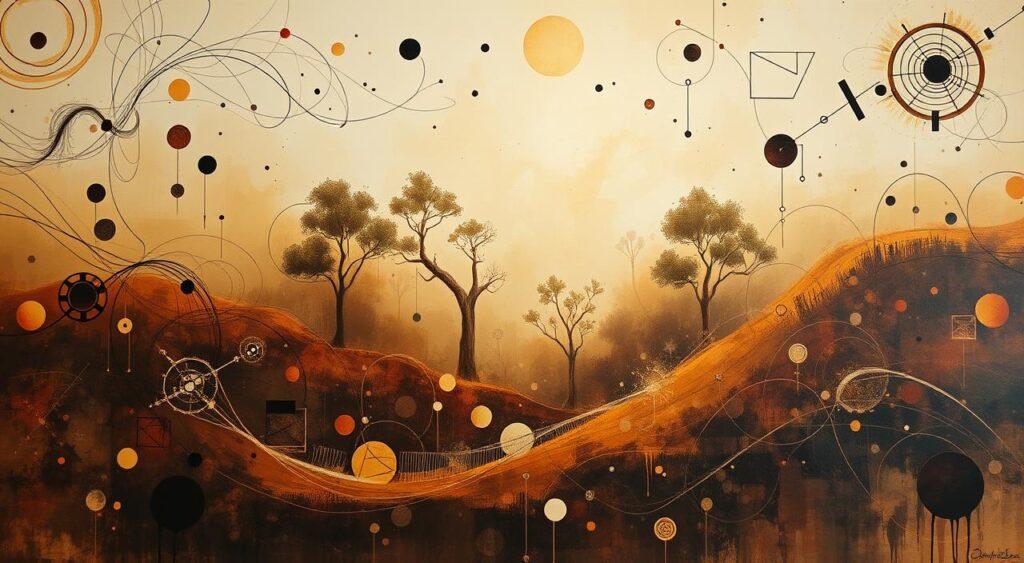
Apophenia can make you more creative but can also lead to bias if not managed. Start by noticing when you see connections in random data. For example, seeing faces in clouds is a common example of this12.
The goal is to use this skill for good, like in research or making decisions, without getting carried away.
Cultivating Awareness of Your Patterns
Keep track of when you think coincidences mean something. Write down your “aha!” moments to see patterns. Shannon Ficklin, who saw feathers as omens13, shows how small patterns can seem big.
Ask yourself: “Is this a real connection or my brain making it up?”
“The brain’s pattern-seeking is a survival tool, but it needs checks,” says psychologist Christopher Moore12.
- Pause before acting on a pattern. Ask: “Does evidence support this link?”
- Discuss your insights with others to check their validity.
- Use apophenia in brainstorming to spark ideas, then verify them logically.
Balancing Insight with Skepticism
Apophenia in research works best with critical thinking. When looking at data, keep apophenia pattern recognition separate from facts. For example, false beliefs about vaccines show the dangers of unchecked bias14.
Mix creativity with doubt:
- Challenge your assumptions: “Could randomness explain this?”
- Seek diverse views to avoid confirmation bias12.
Healthy apophenia can lead to innovation. Einstein’s ideas started with “what if?” questions. Stay curious but keep your feet on the ground to use its power wisely.
Risks of Misinterpreting Apophenia
Apophenia can make it hard to tell insight from delusion. When we start seeing patterns everywhere, it might mean we need to look at our mental health.
Over 70% of people with schizophrenia see patterns where there are none, thinking random things are part of a plot15.
In our daily lives, apophenia can influence our choices. It can make us believe in lucky charms or fear secret plots. This shows how apophenia psychology affects us all.
Recognizing When It Becomes a Problem
- Seeing conspiracies in unrelated events (e.g., coworkers “against you”)
- Ignoring evidence contradicting your patterns
- Experiencing anxiety when patterns aren’t “confirmed”
People who are open to new experiences are more likely to see things that aren’t there5. If pattern-seeking makes you pull away from reality or hurt relationships, it’s time to think about it.
Avoiding Superstitions and False Beliefs
Believing in “near misses” or “signs” often comes from apophenia. For example, 90% of people feel like someone is watching them in empty places because of pattern mistakes5. To stay grounded:
- Ask: “Is this based on facts or feelings?”
- Test patterns against objective data
- Seek second opinions on “discoveries”
“Probability favors randomness more than we think,” noted statistician David Hand, noting coincidences happen more often than perceived5
If patterns start to disrupt your life, talking to mental health experts can help. Mixing creativity with critical thinking can keep apophenia useful, not a trap.
Conclusion
The apophenia mental model is more than a quirky brain glitch. It’s a powerful way we see the world. It helped our ancestors spot dangers, but now it affects our daily lives.
It influences how we trade stocks and form superstitions. By understanding apophenia, we can avoid false patterns. This helps us make better decisions and be more creative.
Recognizing when our brains are making things up is key. It’s the first step to clearer thinking. This helps us avoid costly mistakes and make smarter choices.
